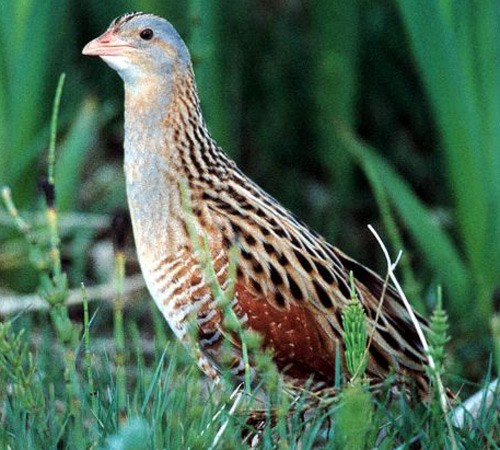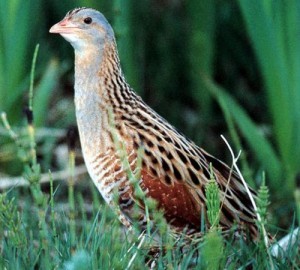The signs for one of Ireland’s rarest birds is looking positive after a number were spotted in Falcarragh, Tory Island, Malin and Ballyliffin.
Fifty years ago, the call of the Corncrake was an everyday part of life throughout Donegal.
However, in the 1960s, the population plummeted dramatically.
In recent years the birds, which migrate back to Ireland from Africa to breed each year, stood at just a few pairs in small coastal pockets and islands of Donegal, Connemara and Mayo.
But last year saw an explosion in their population increase by 44% to 189 breeding pairs – 128 of which were recorded in Co Donegal.
Corncrake fieldworker for Co Donegal, Marie Duffy, said the signs are looking positive for another increase in the corncrake population after a number were recorded in recent days.
“We have a number of early recordings of the birds which is a very positive indication. Last year was a very good year with the 44% increase on 2012.
“Timing is everything with the corncrake and if farmers can hold back on cutting for a couple of weeks then that would give young birds a better chance of survival,” she said.
The upsurge in numbers of the rare bird can be directly linked to the setting up of the Corncrake Conservation Project was created over twenty years ago. It is now run by the National Parks and Wildlife Services, and the project staff carries out an annual breeding census.
This involves locating calling male corncrakes as they arrive and seeking landowner collaboration to protect them in their chosen breeding habitat.
Landowners are offered a range of agri-environmental schemes including the Corncrake Grant Scheme which offers compensation for mowing meadows late and in a slow controlled manner, encouraging the survival of corncrake chicks.
Ms Duffy said she is hopeful the numbers of corncrakes leaving Ireland to make the long journey back to sub Saharan Africa at the end of August will be even great than last year.
“That is the hope. We are receiving great support from the farming community and hopefully we can build on last year’s numbers and ensure than the corncrake is not only saved but continues to grow,” she said.
Tags:









